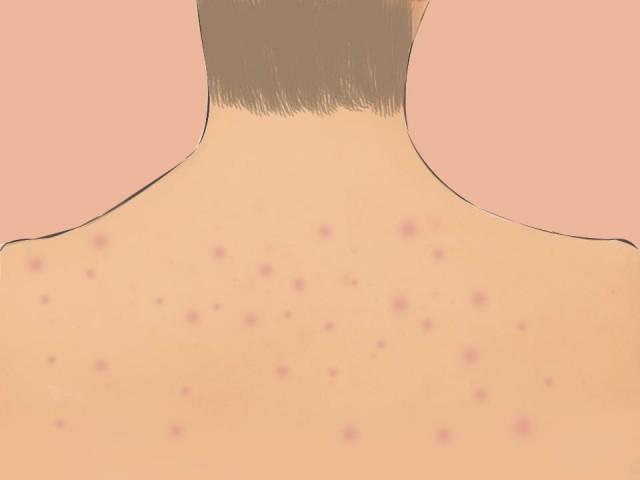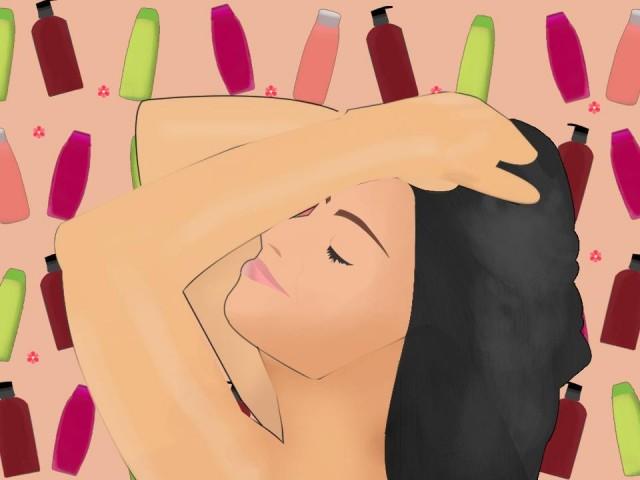What's the deal with back acne? Experts share common causes and tips on how to prevent them
Facial acne takes all of the spotlight, with numerous articles written about how to get rid of them and plenty of products on the market to help you deal with them.
But acne does not discriminate. It can appear on other parts of your body, too. In fact, as Claire Reyes-Habito, MD, FPDS of the Asian Hospital and Medical Center points out, acne can develop in any skin area rich in sebum — oily secretion — like the face, shoulders, chest, and back.
Maria Lourdes Palmero, a pediatric and adult dermatologist at The Medical City and the University of Santo Tomas Hospital further explains that back acne forms when sebum, in combination with dead skin cells and bacteria, builds up and clogs hair follicles on the back.

Blame Puberty
Ah puberty, that magical time when your hormones start to take over your body and you suddenly have to deal with things like menstruation, body odor, body hair, and yes, acne. According to Reyes-Habito, “[Back acne] is commonly triggered by hormones, especially during puberty.”
Leslie Colleen Acosta Tiongson MD, DPDS, a dermatologist at Metro North Medical Center, adds, “During puberty, back and chest acne may become a problem for females.” The good news is, the older you get, the less you have to worry about bacne. “As the androgens decrease when we age, the incidence of back and chest acne in females also decreases,” she says.
Check your hair products
Choosing the right haircare products can spell the difference between a smooth, blemish-free back and one that’s riddled with pimples. Reyes-Habito recommends you check the hair and skin products (shampoo, conditioner, lotion, etc.) that you use to make sure they are non-comedogenic.
“Some hair products are made to smoothen hair cuticles. When not washed out properly, the comedogenic ingredients [in these products] can block pores and cause [what’s known as] pomade acne.”
She enumerates some of the ingredients you need to watch out for: cyclopentasiloxane, dimethicone, and silicones.

Don’t sweat it
Great news, gym rats: Sweating in itself does not cause bacne. “Sweat is produced by sweat glands and is not related to the sebaceous glands that cause increased sebum production associated with acne lesions,” explains Reyes-Habito.
She also mentions a study that showed no significant difference in bacne between people who showered one hour after exercise, those who showered four hours after working out, and those who don’t work out at all.
Tiongson notes, however, that sweating can worsen bacne. “One common aggravating factor for back acne in men and women is sweat.” She advises to “change shirts immediately when it is drenched in sweat in order to prevent bacne.”
Wear the right clothes
Here’s another reason to make sure you wear the right fit when it comes to bras. Reyes-Habito reveals that the pressure and friction caused by tight-fitting straps (like bra straps and belts) may block pores and lead to acne mechanica which, according to WebMd, is a type of acne caused by heat, friction, and pressure against the skin.
Aside from avoiding tight-fitting clothes, Tiongson also suggests to wear cotton fabrics, which effectively absorb sweat. “If a person sweats excessively and wears clothing that prevents sweat from evaporating, it can aggravate back acne.”
PCOS (Polycistic Ovary Syndrome) plus other hormonal imbalances
There are other medical and health reasons, too, that can cause bacne. “Acne, whether on the face or back, may be influenced by hormones, especially in adolescents,” says Palmero. “However, if the [acne is severe and does not respond to conventional treatment], medical conditions such as PCOS should be considered,” she continues.
Adds Tiongson, “If back acne persists during adulthood and is resistant to treatment, other health problems such as hormonal imbalance may be entertained. Also, intake of certain medications or dietary supplements can cause back acne.”
Treatments and Medications
There are different treatments and medicines that can address bacne. Palmero recommends comedolytics, like retinoic acid, alpha hydroxy acid, adapalene, etc., for bacne prevention and treatment.
“Comedolytics are topical medications that may be applied to the back to exfoliate the skin, removing the build up of sebum, dead skin cells, and bacteria.” She says that in severe cases, topical or oral antimicrobials may also be prescribed.
According to Reyes-Habito, comedolytics used to treat facial acne can also be used to treat back acne. These include salicylic acid, glycolic acid, retinoid, or benzoyl peroxide.
However, she goes on to say that, because the back covers a bigger surface area than the face, [medications for bacne come in formulations] that are easier to apply, like acne wash, acne soaps, or acne lotions." Like Palmero she adds that in extreme cases, oral anti-acne medications such as doxycycline may be advised by your dermatologist.
Tiongson would like you to bear in mind, too, that, even though there may be an overlap of medications used to treat acne on the face and back, not all medications used on the back can be used on the face, and vice versa. So it’s important, as Palmero points out, to consult a certified dermatologist before undergoing any kind of treatment or using any medication for your bacne. — LA, GMA News




